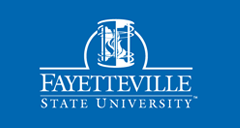Abstract
Teaching students about race and racism are so multi-faceted and sophisticated, yet it remains the most crucial conversation and lesson to have with young people to empower them. One of the useful ways Americans can attempt to unravel and transform this complicated legacy is to make it a part of a school’s curriculum. Allowing race and racism to remain a hidden-aspect of a school’s curriculum reinforces its trivialization and dysfunction.
Indeed, having constructed, well-thought-out lessons about race and racism “myth-bust” any attempts for future Americans to continually embrace xenophobia and genetic inferiority. In recent years, the institution of education and schooling has shown progress changing young people’s mindsets toward the LGBTQ community, diverse learners, and disabled citizens. Why has this slowly occurred with breaking people's ideologues when dealing with race and racism? It is because educators, typically, find it difficult to broach this sensitive subject within their school community and curriculum.
Without using educational tools and resources, found within a contemporary school curriculum, Americans will remain uneducated and ignorant about how to push back against racism's ugly head, e.g., police agencies, banking institutions, real-estate markets, and health care. That is why every attempt needs to be made by schools to change how young people view race and racism.
Recommended Citation
Ali, Sunni
(2018)
"How Race and Racism Empower a School's Curriculum,"
Journal of Research Initiatives: Vol. 4:
Iss.
1, Article 1.
Available at:
https://digitalcommons.uncfsu.edu/jri/vol4/iss1/1
Included in
Bilingual, Multilingual, and Multicultural Education Commons, Community College Leadership Commons, Curriculum and Instruction Commons, Disability and Equity in Education Commons, Educational Psychology Commons, Elementary and Middle and Secondary Education Administration Commons, Elementary Education and Teaching Commons, International and Comparative Education Commons, Junior High, Intermediate, Middle School Education and Teaching Commons, Social and Behavioral Sciences Commons, Student Counseling and Personnel Services Commons
